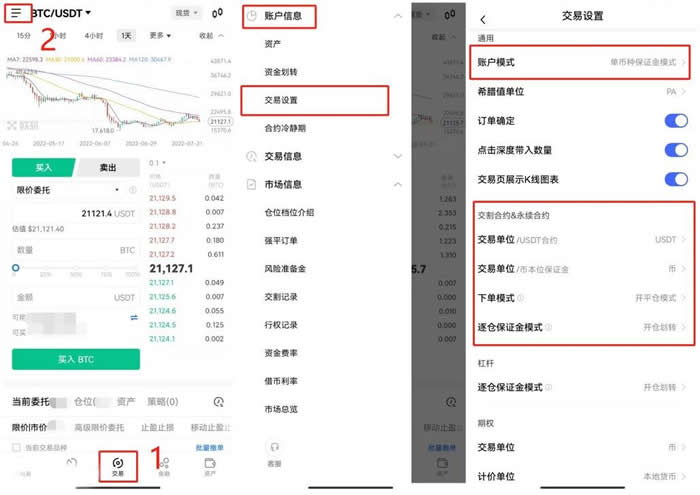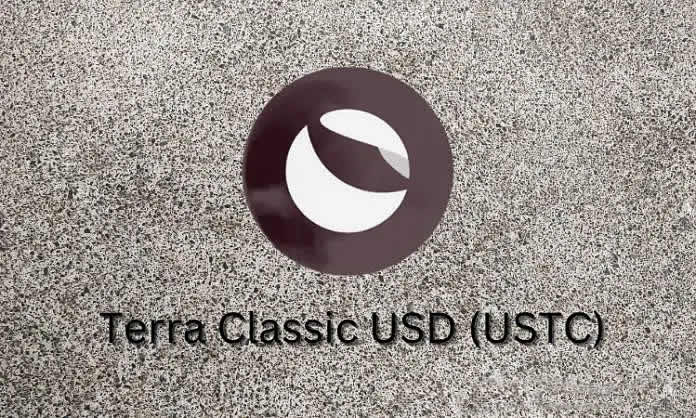[zz]Python & XML
时间:2010-02-19 来源:huixiangtao
Python and XML are two very different animals, each with a rich history. Python is a full-scale programming language that has grown from scripting world roots in a very organic way, through the vision and guidance of Python's inventor, Guido van Rossum. Guido continues to take into account the needs of Python developers as Python matures. XML, on the other hand, though strongly impacted by the ideas of a small cadre of visionaries, has grown from standards-committee roots. It has seen both quiet adoption and wrenching battles over its future. Why bother putting the two technologies together?
Before the Python/XML combination, there seemed no easy or effective way to work with XML in a distributed environment. Developers were forced to rely on a variety of tools used in awkward combination with one other. We used shell scripting and Perl to process text and interact with the operating system, and then used Java XML API's for processing XML and network programming. The shell provided an excellent means of file manipulation and interaction with the Unix system, and Perl was a good choice for simple text manipulation, providing access to the Unix APIs. Unfortunately, neither sported a sophisticated object model. Java, on the other hand, featured an object-oriented environment, a robust platform API for network programming, threads, and graphical user interface (GUI) application development. But with Java, we found an immediate lack of text manipulation power; scripting languages typically provided strong text processing. Python presented a perfect solution, as it combines the strengths of all of these various options.
Like most scripting languages, Python features excellent text and file manipulation capabilities. Yet, unlike most scripting languages, Python sports a powerful object-oriented environment with a robust platform API for network programming, threads, and graphical user interface development. It can be extended with components written in C and C++ with ease, allowing it to be connected to most existing libraries. To top it off, Python has been shown to be more portable than other popular interpreted languages, running comfortably on platforms ranging from massive parallel Connection Machines to personal digital assistants and other embedded systems. As a result, Python is an excellent choice for XML programming and distributed application development.
It could be said that Python brings sanity and robustness to the scripting world, much in the same way that Java once did to the C++ world. As always, there are trade-offs. In moving from C++ to Java, you find a simpler language with stronger object-oriented underpinnings. Changing to a simpler language further removed from the low-level details of memory management and the hardware, you gain robustness and an improved ability to locate coding errors. You also encounter a rich API equipped with easy thread management, network programming, and support for Internet technologies and protocols. As may be expected, this flexibility comes at a cost: you also encounter some reduced performance when comparing it with languages such as C and C++.
Likewise, when choosing a scripting language such as Python over C, C++, or even Java, you do make some concessions. You trade performance for robustness and for the ability to develop more rapidly. In the area of enterprise and Internet systems development, choosing reliable software, flexible design, and rapid growth and deployment are factors that outweigh the performance gains you might get by using a language such as C++. If you do need some of the performance back, you can still implement speed-sensitive components of your application in C or C++, but you can avoid doing so until you have profiling data to help you pinpoint what is really a problem and what only might be a problem. (How to perform the analysis and write extensions in C/C++ is a topic for other books.)
Regardless of your feelings on scripting languages, Java, or C++, this book focuses on XML and the Python language. For those who are new to XML, we will start with an overview of why it is interesting, and then we'll move on to using it from Python and seeing how we make our XML applications easier to create.
Key Advantages of XML
XML has a few key advantages that make it the data language of choice on the Internet. These advantages were designed into XML from the beginning, and, in fact, are what make it so appealing to Internet developers.
Application Neutrality
First, XML is both human- and machine-readable. This is not a subtle point. Have you ever tried to read a Microsoft Word document with a text editor? You can't if it was saved as a .doc file, because the information in a .doc document is in a binary (computer readable only) format, even though most Word documents primarily consist of text. A Word document cannot be shared with any other application besides Word--unless that application has been taught the intricacies of Word's binary format. In this case, the application must also be taught to expect changes in Word's format each time there is a new release from Microsoft.
This sounds annoying for the developer, but how bad is it, really? After all, Word is incredibly popular, so it must not be too hard to figure out. Let's look at the top of the Word file that contains this chapter:
Ï_ࡱ_á > _ ÿ _ _ B_ _ D_ _
ÿÿÿ ?_ @_ A_ ÿÿÿÿÿÿÿÿÿÿÿÿÿÿÿÿÿÿÿÿÿÿÿÿÿÿÿÿÿÿÿÿÿÿÿÿÿÿÿÿÿÿÿÿÿÿÿÿÿÿ
ÿÿÿÿÿÿÿÿÿÿÿÿÿÿÿÿÿÿÿÿÿÿÿÿÿÿÿÿÿÿÿÿÿÿÿÿÿÿÿÿÿÿÿÿÿÿÿÿÿÿÿÿÿÿÿÿÿÿÿÿÿÿÿÿÿÿÿÿÿ
ÿÿÿÿÿÿÿÿÿÿÿÿÿÿÿÿÿÿÿÿÿÿÿÿÿÿÿÿÿÿÿÿÿÿÿÿÿÿÿÿÿÿÿÿÿÿÿÿÿÿÿÿÿÿÿÿÿÿÿÿÿÿÿÿÿÿÿÿÿ
ÿÿÿÿÿÿÿÿÿÿÿÿÿÿÿÿÿÿÿÿÿÿÿÿÿÿÿÿÿÿÿÿÿÿÿÿÿÿÿÿÿÿÿÿÿÿÿÿÿÿÿÿÿÿÿÿÿÿÿÿÿÿÿÿÿÿÿÿÿ
ÿÿÿÿÿÿÿÿÿÿÿÿÿÿÿÿÿÿÿÿÿÿÿÿÿÿÿÿÿÿÿÿÿÿÿÿÿÿÿÿÿÿÿÿÿÿÿÿÿÿÿÿÿÿÿÿÿÿÿÿÿÿÿÿÿÿÿÿÿ
ÿÿÿÿÿÿÿÿÿÿÿÿÿÿÿÿÿÿÿÿÿÿÿÿÿÿÿÿÿÿÿÿÿÿÿÿÿÿÿÿÿÿÿÿÿÿÿÿÿÿÿÿÿÿÿÿÿÿÿÿÿÿÿÿÿÿÿÿÿ
ÿÿÿÿÿÿÿÿÿÿÿÿÿÿÿÿÿÿÿÿÿÿÿÿÿÿÿÿÿì¥Á 7 _ ≤_¿ _ _ >_ _
bjbjU_U_ __ 0¸_ 7| 7| W_ _ C
ÿÿ_ ÿÿ_ ÿÿ_ l Ê_
Ê_ Ê_ Ê_ Ê_ Ê_ Ê_ ¶ _
This certainly looks familiar to anyone who has ever opened a Word file with a text editor. We don't see our recognizable text (the content we intended) so we must assume it is buried deep in the file. Determining what the true content is and where it is can be difficult, but it shouldn't be. It is our data, after all. Let's try another supported format: "Rich Text Format," or RTF. Unlike the .doc file, this format is text-based, and should therefore be a bit easier to decipher. We search down in the file to find the start of our text:
\par }\pard \s34\qr
\li0\ri0\sb80\sa480\sl240\slmult0\widctlpar\aspalpha\aspnum\faauto\out
linelevel0\widctlpar\aspalpha\aspnum\faauto\outlinelevel0\pnrauth1\pnr
date-967302179\pnrnot1\adjustright\rin0\lin0\itap0 {\b0\fs48 Combining
Python and XML}{
\b0\deleted\fs48\revauthdel1\revdttmdel-2041034726 Fundamentals}{\b0\f
s48\revised\revauth1\revdttm-2041034726 ?}{\b0\fs48
\par }\pard\plain \qj
This is better. The chapter title is visible, so we can try to decipher the structure from that point forward. The markup appears to be complex, and there's a hint of an old version of the chapter title. To extract the text we actually want, we need to understand the Word model for revision tracking, which still presents many challenges.
XML, on the other hand, is application-neutral. In other words, an XML document is usually processed by an XML parser or processor, but if one is not available, an XML document can be easily read and parsed. Data kept in XML is not trapped within the constraints of one particular software application. The ability to read rich data files can become very valuable when, for example, 20 years from now, you dig up a CD-ROM of old business forms that you suddenly find you need again. Will QuickBooks still allow you to extract this same data in 2021? With XML, you can read the data with any text editor.
Let's look at this chapter in XML. Using markup from a common document type for software manuals and documentation (DocBook), it appears somewhat verbose, and doesn't include change-tracking information, but we can identify the text quite easily now:
<chapter>
<title>Python and XML</title>
<para>Python and XML are two very different animals, each with a
rich history. Python is a full-scale programming language that has grown
from scripting world roots, and has done so in a very organic way
Note that additional characters appear in the document (other than the document content); these are called markup (or tags). We saw this in the RTF version of the document as well, but there were many more bits of text that were difficult to decipher, and we can reasonably surmise that the strange data in the MS Word document would correspond to this in some way. Were this a book on RTF, you would quickly surmise two things: RTF is much more like a printer control language than the example of XML we just looked at, and writing a program that understands RTF would be quite difficult. In this book, we're going to show you that XML can be used to define languages that fit your application, and that creating programs that can decipher XML is not a difficult task, especially with the help of Python.
Hierarchical Structure
XML is hierarchical, and allows you to choose your own tag names. This is quite different from HTML. In XML, you are free to create elements of any type, and stack other elements within those elements. For example, consider an address entry:
<?xml version="1.0"?> <address> <name>Bubba McBubba</name> <street>123 Happy Go Lucky Ln.</street> <city>Seattle</city><state>WA</state><zip>98056</zip> </address>
In the above well-formed XML code, I came up with a few record names and then lumped them together with data. XML processing software, such as a parser (which you use to interpret the syntactic constructs in an XML document), would be able to represent this data in many ways, because its structure has been communicated. For example, if we were to look at what an application programmer might write in source code, we could turn this record into an object initialized this way:
addr = Address( ) addr.name = "Bubba McBubba" addr.street = "123 Happy Go Lucky Ln." addr.city = "Seattle" addr.state = "WA" addr.zip = "98056"
This approach makes XML well-suited as a format for many serialized objects. (There are some constructs for which XML is not so well suited, including many formats for large numerical datasets used in scientific computing.) XML's hierarchical structure makes it easy to apply the concept of object interfaces to documents--it's quite simple to build application-specific objects directly from the information stream, given mappings from element names to object types. We later see that we can model more than simple hierarchical structures with XML.
Platform Neutrality
Remember that XML is cross-platform. While this is mainly a feature of its text-based format, it's still very much true. The use of certain text encodings ensures that there are no misconceptions among platforms as to the arrangement of an XML document. Therefore, it's easy to pass an XML purchase order from a Unix machine to a wireless personal digital assistant. XML is designed for use in conjunction with existing Internet infrastructure using HTTP, SSL, and other messaging protocols as they evolve. These qualities make XML lend itself to distributed applications; it has been successfully used as a foundation for message queuing systems, instant messaging applications, and remote procedure call frameworks. We examine these applications further in Chapter 9 and Chapter 10. It also means that the document example given earlier is more than simply application-neutral, and can be readily moved from one type of machine to another without loss of information. A chapter of a technical book can be written by a programmer on his or her favorite flavor of Unix, and then sent to a publisher using book composition software on a Macintosh. The many difficult format conversions can be avoided.
International Language Support
As the Internet becomes increasingly pervasive in our daily lives, we become more aware of the world around us -- it is a culture-rich and diversified place. As technologists, however, we are still learning the significance of making our software work in ways that supports more than one language at a time; making our text-processing routines "8-bit safe" is not only no longer sufficient, it's no longer even close.
Standards bodies all over the world have come up with ways that computers can interchange text written in their national languages, and sometimes they've come up with several, each having varying degrees of acceptance. Unfortunately, most applications do not include information about which language or interchange standard their data is written in, so it is difficult to share information across the cultural and linguistic boundaries the different standards represent. Sometimes it is difficult to share information within such boundaries if multiple standards are prominent.
The difficulties are compounded by very substantial cultural differences that present themselves about how text is handled. There are many different writing systems in addition to the western European left-to-right, top-to-bottom style in which this book is written; right-to-left is not uncommon, and top-to-bottom "lines" of text arranged right-to-left on the page is used in China. Hebrew uses a right-to-left writing system, but numbers are written using Arabic numerals from left to right. Other systems support textual annotations written in parallel with the text. Consider what happens when a document includes text from different writing systems!
Standards bodies are aware of this problem, and have been working on solutions for years. The editors of the XML specification have wisely avoided proposing new solutions to most of these issues, and are instead choosing to build on the work of experts on the topic and existing standards.
The International Organization for Standardization (ISO) and the Unicode Consortium (http://www.unicode.org/ ) have arrived at a single standard that, while not perfect, is perhaps the most capable standard attempting to unify the world's text representations, with the intent that all languages and alphabets (including ideographic and hieroglyphic character sets) are representable. The standard is known as ISO/IEC 10646, or more commonly, Unicode. Not all national standards bodies have agreed that Unicode is the standard for all future text interchange applications, especially in Asia, but there is widespread belief that Unicode is the best thing available to serve everyone. The standard deals with issues including multidirectional text, capitalization rules, and encoding algorithms that can be used to ensure various properties of data streams. The standard does not deal specifically with language issues that are not tied intimately to character issues. Software sensitive to natural language may still need to do a lot beyond using Unicode to ensure proper collation of names in a particular language (or multiple languages!). Some languages will require substantial additional support for proper text rendering (Arabic, for instance, which requires different letterforms for characters based on their position within a word and based on neighboring letterforms).
The World Wide Web Consortium (W3C) made a simple and masterful stroke to make it easier to use both the older interchange standards and Unicode. It required that all XML documents be Unicode, and specified that they must describe their own encoding in such a way that all XML processors were able to determine what encoding the document was written in. A few specific encodings must be recognized by all processors, so that it is always possible to generate XML that can be read anywhere and represent all of the world's characters. There is also a feature that allows the content of XML documents to be labeled with the actual language it is written in, but that's not used as much as it could be at this time.
Since XML documents are Unicode documents, the languages of the world are supported. The use of Unicode and encodings in XML are discussed in some detail in Chapter 2. Unicode strings have been a part of Python since Version 2.0, and the Python standard library includes support for a large number of encodings.
The XML Specifications
In the trade press, we often see references about how XML "now supports" some particular industry-specific application. The article that follows is often confused, offering some small morsel of information about an industry consortium that has released a new specification for an XML-based language to support interoperability of data within the consortium's industry. As technical people, we usually note that it doesn't apply to the industries we're involved in, or else it does, but the specification is too early a draft to be useful. In fact, our managers will probably agree with us most of the time, or they'll be privy to some relevant information that causes them to disagree. If we step up the corporate ladder a couple more rungs, however, we often find an increase in the level of confusion over XML. Sometimes, this is accompanied by either a call to "adopt XML" (too often with a list of particular specifications that are not intended to be used together), or a reaction that XML is too immature to use at all.
So we need to think about just what we can work with that will meet the following criteria:
- It must make technical sense for our application.
- It should be sufficiently well-defined that implementation is possible.
- It must be able to be explained and justified to (at least) our direct managers.
- It won't freak out the upper management.
Ok, we're technical people, so we may have to ignore that last item; it certainly won't be covered in this book. In fact, most of this really can't be covered in technical material. There are many specifications in various stages of maturity, and most are specific to one industry or another. However, we can point out what the foundation specifications are, because those you will need regardless of your industry or other requirements.
XML 1.0 Recommendation
The XML specification itself is a document created and maintained by the W3C. As of this writing, the current version is Extensible Markup Language (XML) 1.0 (Second Edition), and is available from the W3C web site at http://www.w3.org/TR/REC-xml. (The second edition differs from the first only in that some editorial corrections and clarifications have been made; the specification is stable.)
XML itself is not a markup language, but a meta-language that can be used to define specific markup languages. In this, it inherits much from SGML. The specification covers five aspects of markup languages:
- Range of structural forms which can be marked
- Specific syntax of markup components
- A schema language used to define specific languages
- Definition of validity constraints
- Minimum requirements for processing tools
Unlike SGML, XML allows itself to be used without defining an explicit markup language in any formal way. Whether or not this is useful for your applications, it has greatly accelerated the acceptance of XML-based technologies in some developer communities. This can happen because of the lower cost of entrance to the XML space. It is possible to adopt XML without learning some of the more esoteric corners of the specification, and development prototypes can start using XML technologies without a lot of advance planning.
Chapter 2 presents the most widely used parts of the specification and goes into more depth on what are the most important items to most readers of this book. If any of the details are of particular interest to you, please spend some time reading relevant parts of the specification. While it is at times a bit convoluted, it is not generally a difficult specification to read.
Namespaces in XML
While the XML 1.0 recommendation defines specific syntactic aspects of XML and one way of creating document types, it does not discuss how to combine components from multiple document types. The Namespaces in XML recommendation, available at http://www.w3.org/TR/REC-xml-names (referred to as Namespaces from now on), deals with the syntactic and structural mechanics of combining structured components from different specifications, but is largely silent on the meaning of resulting combinations. For this, it defers to specifications that had not been written when Namespaces was published.
This recommendation places some additional constraints on the syntactic construction of conformant documents. It allows a document to specify the source of each element or attribute by placing it in a namespace. Each namespace provides definitions for elements and attributes. How the elements and attributes are defined is not covered in this specification, so the concept of validation of an arbitrary document that uses namespaces is not entirely clear. It is possible to create a document type using XML 1.0 that has some support for namespaces, but such a schema loses much of the flexibility offered by the Namespaces specification. For example, the document type would have to specify the particular prefixes to which each namespace is bound, while the Namespaces specification allows prefixes to be determined by the document rather than the schema. Alternate schema languages that have better support for Namespaces have been defined; these are discussed briefly in Chapter 2.
XML as a Foundation
Like its predecessor SGML, XML provides a way to define languages that fit the requirements of your application. By specifying the exact syntax of the grammatical elements (such as the characters used to mark the start of an element), it has reduced the effort required to build conforming software--the components needed to extract an application's data from XML are far smaller and simpler to use than the corresponding components are for SGML.
The additional specifications, which the trade press so enjoy discussing every time a news release comes out, are generally built by defining new languages using the base XML and Namespaces recommendations. These are often documented by schema definitions (the forms that these take are described in Chapter 2) as well as committee-driven documents that attempt to explain how the language should be used. Since every industry has at least one consortium that deals in part with data interchange between different components of the industry (think of doctors, pharmacies, and hospitals in the health care field), many standards take this form. Many of the standards for XML are derived from earlier efforts using older SGML industry-specific languages, and many are new.
Locating information about the languages that have been defined for your industry may be easy or it may be difficult. There are many resources you can use to locate relevant specifications:
http://xml.schema.net/ This web site contains information on a range of standards based on XML, including general business-oriented specifications, industry-specific standards, interoperable languages for academic research, and general Internet-related specifications. http://www.biztalk.com/ Information about the Microsoft-sponsored "BizTalk" range of business interoperability specifications can be found at this web site. http://www.ebxml.org/ The "e-business XML" initiative, or ebXML, grows out of the EDI community, and generally competes with BizTalk. http://www.w3.org/ For general Internet-related specifications, the World Wide Web Consortium is perhaps the best place to look; the working groups there have a broad constituency and the results of their efforts have a high level of uptake wherever they apply. http://www.google.com/ If all else fails, try searching here for "XML" and various keywords related to your industry (especially the names of major industry consortia).The Power of Python and XML
Now that we've introduced you to the world of XML, we'll look at what Python brings to the table. We'll review the Python features that apply to XML, and then we'll give some specific examples of Python with XML. As a very high-level language, Python includes many powerful data structures as part of the core language and libraries. The more recent versions of Python, from 2.0 onward, include excellent support for Unicode and an impressive range of encodings, as well as an excellent (and fast!) XML parser that provides character data from XML as Unicode strings. Python's standard library also contains implementations of the industry-standard DOM and SAX interfaces for working with XML data, and additional support for alternate parsers and interfaces is available.
Of course, this much could be said of other modern high-level languages as well. Java certainly includes an impressive library of highly usable data structures, and Perl offers equivalent data structures also. What makes Python preferable to those languages and their libraries? There are several features, of which we briefly discuss the most important:
- Python source code is easy to read and maintain.
- The interactive interpreter makes it simple to try out code fragments.
- Python is incredibly portable, but does not restrict access to platform-specific capabilities.
- The object-oriented features are powerful without being obscure.
There are many languages capable of doing what can be done with Python, but it is rare to find all of the "peripheral" qualities of Python in any single language. These qualities do not so much make Python more capable, but they make it much easier to apply, reducing programming hours. This allows more time to be spent finding better ways to solve real problems or just allows the programmer to move on to the next problem. Here we discuss these features in more detail.
Easy to read and maintain As a programming language, Python exhibits a remarkable clarity of expression. Though some programmers accustomed to other languages view Python's use of significant whitespace with surprise, everyone seems to think it makes Python source code significantly more readable than languages that require more special characters to be introduced to mark structure in the source. Python's structures are not simpler than those of other languages, but the different syntax makes source code "feel" much cleaner in Python. The use of whitespace also helps avoid having minor stylistic differences, such as the placement of structural braces, so there's a greater degree of visual consistency across code by different programmers. While this may seem like a minor thing to many programmers, the effect is that maintaining code written by another programmer becomes much easier simply because its easier to concentrate on the actual structure and algorithms of the code. For the individual programmer, this is a nice side benefit, but for a business, this results in lower expenses for code maintenance. Exploratory programming in an interactive interpreter Many modern high-level programming languages offer interpreters, but few have proved as successful at doing so as Python. Others, such as Java, do not generally offer interpreters at all. If we consider Perl, a language that is arguably very capable when used from a command line, we see that it is not equipped with a rich interpreter. If we start the Perl interpreter without naming a script, it simply waits for us to type a complete script at the console, and then interprets the script when we're done. It does allow us to enter a few commands on the command line directly, but there's no ability to run one statement at a time and inspect the results as we go in order to determine if each bit of code is doing exactly what we expect. With Python, the interactive interpreter provides a rich environment for executing individual statements and testing the results. Portability without restrictions The Python interpreter is one of the most portable language interpreters available. It is known to run on platforms ranging from PDAs and other embedded systems to some of the most powerful multiprocessor platforms ever built. It can run on more operating systems than perhaps any other interpreter. Moreover, carefully written application code can share much of this portability. Python provides a great array of abstractions that do just enough to hide platform differences while allowing the programmer to use the services of specific platforms when necessary. When an application requires access to facilities or libraries that Python does not provide, Python also makes it easy to add extensions that take advantage of these additional facilities. Additional modules can be created (usually in C or C++, but other languages can be used as well) that allow Python code to call on external facilities efficiently. Powerful but accessible object-orientation At one time, it was common to hear about how object-oriented programming (OOP) would solve most of the technical problems programmers had to deal with in their code. Of course, programmers knew better, pushed back, and turned the concepts into useful tools that could be applied when appropriate (though how and when it should be applied may always be the subject of debate). Unfortunately, many languages that have strong support for OOP are either very tedious to work with (such as C++ or, to a lesser extent, Java), or they have not been as widely accepted for general use (such as Eiffel). Python is different. The language supports object orientation without much of the syntactic overhead found in many widely used object-oriented languages, making it very easy to define new object types. Unlike many other languages, Python is highly polymorphic; interfaces are defined in much less stringent ways than in languages such as C++ and Java. This makes it easy to create useful objects without having to write code that exists only to conform to an interface, but that will not actually be used in a particular application. When combined with the excellent advantage taken by Python's standard library of a variety of common interfaces, the value of creating reusable objects is easily recognized, all while the ease of implementing useful interfaces is maintained.Python Tools for XML
Three major packages provide Python tools for working with XML. These are, from the most commonly used to the largest:
- The Python standard library
- PyXML, produced by the Python XML Special Interest Group
- 4Suite, provided by Fourthought, Inc.
The Python standard library provides a minimal but useful set of interfaces to work with XML, including an interface to the popular Expat XML parser, an implementation of the lightweight Simple API for XML (SAX), and a basic implementation of the core Document Object Model (DOM). The DOM implementation supports Level 1 and much of Level 2 of the DOM specification from the W3C, but does not implement most of the optional features. The material in the standard library was drawn from material originally in the PyXML package, and additional material was contributed by leading Python XML developers.
PyXML is a more feature-laden package; it extends the standard library with additional XML parsers, has a much more substantial DOM implementation (including more optional features), has adapters to allow more parsers to support the SAX interface, XPath expression parsing and evaluation, XSLT transformations, and a variety of other helper modules. The package is maintained as a community effort by many of the most active Python/XML programmers.
4Suite is not a superset of the other packages, but is intended to be used in addition to PyXML. It offers additional DOM implementations tailored for different applications, support for the XLink and XPointer specifications, and tools for working with Resource Description Framework (RDF) data.
These are the packages used throughout the book; see Appendix A for more information on obtaining and installing them. Still more are available; see Appendix F for brief descriptions of several of these and references to more information online.
The SAX and DOM APIs
The two most basic and broadly used APIs to XML data are the SAX and DOM interfaces. These interfaces differ substantially; learning to determine which of these is appropriate for your application is an important step to learn.
SAX defines a relatively low-level interface that is easy for XML parsers to support, but requires the application programmer to manage more details of using the information in the XML documents and performing operations on it. It offers the advantage of low overhead: no large data structures are constructed unless the application itself actually needs them. This allows many forms of processing to proceed much more quickly than could occur if more overhead were required, and much larger documents can be processed efficiently. It achieves this by being an event-oriented interface; using SAX is more like processing user-input events in a graphical user interface than manipulating a pre-constructed data structure. So how do you get "events" from an XML parser, and what kind of events might there be?
SAX defines a number of handler interfaces that your application can implement to receive events. The methods of these objects are called when the appropriate events are encountered in the XML document being parsed; each method can be thought of as the actual event, which fits well with object-oriented approaches to parsing. Events are categorized as content, document type, lexical, and error events; each category of events is handled using a distinct interface. The application can specify exactly which categories of events it is interested in receiving by providing the parser with the appropriate handlers and omitting those it does not need. Python's XML support provides base classes that allow you to implement only the methods you're interested in, just inheriting do-nothing methods for events you don't need.
The most commonly used events are the content-related events, of which the most important are startElement, characters, and endElement. We look at SAX in depth in Chapter 3, but now let's take a quick look at how we might use SAX to extract some useful information from a document. We'll use a simple document; it's easy to see how this would extend to something more complex. The document is shown here:
<catalog>
<book isbn="1-56592-724-9">
<title>The Cathedral & the Bazaar</title>
<author>Eric S. Raymond</author>
</book>
<book isbn="1-56592-051-1">
<title>Making TeX Work</title>
<author>Norman Walsh</author>
</book>
<!-- imagine more entries here... -->
</catalog>
If we want to create a dictionary that maps the ISBN numbers given in the isbn attribute of the book elements to the titles of the books (the content of the title elements), we would create a content handler (as shown in Example 1-1) that looks at the three events listed previously.
Example 1-1: bookhandler.py
import xml.sax.handler
class BookHandler(xml.sax.handler.ContentHandler):
def __init__(self):
self.inTitle = 0
self.mapping = {}
def startElement(self, name, attributes):
if name == "book":
self.buffer = ""
self.isbn = attributes["isbn"]
elif name == "title":
self.inTitle = 1
def characters(self, data):
if self.inTitle:
self.buffer += data
def endElement(self, name):
if name == "title":
self.inTitle = 0
self.mapping[self.isbn] = self.buffer
Extracting the information we're looking for is now trivial. If the code above is in bookhandler.py and our sample document is in books.xml, we could do this in an interactive session:
>>> import xml.sax
>>> import bookhandler
>>> import pprint
>>>
>>> parser = xml.sax.make_parser( )
>>> handler = bookhandler.BookHandler( )
>>> parser.setContentHandler(handler)
>>> parser.parse("books.xml")
>>> pprint.pprint(handler.mapping)
{u'1-56592-051-1': u'Making TeX Work',
u'1-56592-724-9': u'The Cathedral & the Bazaar'}
For reference material on the handler object methods, refer to Appendix C.
The DOM is quite the opposite of SAX. SAX offers a very small window of view that passes over the input document, relying on the application to infer the whole; the DOM gives the whole document to the application, which must then extract the finer details for itself. Instead of reporting individual events to the application as the parser handles the corresponding syntax in the document, the application creates an object that represents the entire document as a hierarchical structure. Although there is no requirement that the document be completely parsed and stored in memory when the object is provided to the application, most implementations work that way for simplicity. Some implementations avoid this; it is certainly possible to create a DOM implementation that parses the document lazily or uses some kind of persistent storage to keep the parsed document instead of an in-memory structure.
The DOM provides objects called nodes that represent parts of a document to the application. There are several types of nodes, each used for a different kind of construct. It is important to understand that the nodes of the DOM do not directly correspond to SAX events, although many are similar. The easiest way to see the difference is to look at how elements and their content are represented in both APIs. In SAX, an element is represented by start and end events, and its content is represented by all the events that come between the start and the end. The DOM provides a single object that represents the element, and it provides methods that allow the application to get the child nodes that represent the content of the element. Different node types are provided for elements, text, and just about everything else that can exist in an XML document.
We go into more detail and see some extended examples using the DOM in Chapter 4, and a detailed reference to the DOM API is given in Appendix D. For a quick taste of the DOM, let's write a snippet of code that does the same thing we do with SAX in Example 1-1, but using the basic DOM implementation from the Python standard library, as shown in Example 1-2.
Example 1-2: dombook.py
import pprint
import xml.dom.minidom
from xml.dom.minidom import Node
doc = xml.dom.minidom.parse("books.xml")
mapping = {}
for node in doc.getElementsByTagName("book"):
isbn = node.getAttribute("isbn")
L = node.getElementsByTagName("title")
for node2 in L:
title = ""
for node3 in node2.childNodes:
if node3.nodeType == Node.TEXT_NODE:
title += node3.data
mapping[isbn] = title
# mapping now has the same value as in the SAX example:
pprint.pprint(mapping)
It should be clear that we're dealing with something very different here! While there's about the same amount of code in the DOM example, it can be very difficult to develop reusable components, while experience with SAX often points the way to reusable components with only a small bit of refactoring. It is possible to reuse DOM code, but the mindset required is very different. What the DOM provides to compensate is that a document can be manipulated at arbitrary locations with full knowledge of the complete document, and the document contents can be extracted in different ways by different parts of an application without having to parse the document more than once. For some applications, this proves to be a highly motivating reason to use the DOM instead of SAX.
More Ways to Extract Information
SAX and the DOM give us some powerful tools for working with XML, but they clearly require a lot of code and attention to detail to use effectively in a large application. In both cases, working with complex data requires a great deal of work just to extract the interesting bits from the XML documents that contain the data. Now, what sorts of tools would we normally turn to when dealing with complex data sets? Two that come to mind are higher-level abstractions (such as APIs that do more work, and specialized task-oriented languages), and preprocessing techniques (transforming data from one form to another more suitable to the task at hand). Fortunately, both of these are available to us when working with XML from Python.
When an XML user wants to specify a portion of a document based on possibly complex criteria, she uses a language which lets her write the specification concisely; that language is called the XML Path Language, or XPath. Support for XPath is available in the 4Suite package, and has recently been added to the PyXML package as well. Using XPath, a query can be written that selects nodes from a DOM tree based on the element names, attribute values, textual content, and relationships between the nodes. We cover XPath in some detail, including how to use it with a DOM tree in Python, in Chapter 5.
Other times, what we'd really like is a new document that either contains less information or arranges it very differently. For this, we need a way to specify a transformation of a document that generates another document. This is provided by XML Stylesheet Language Transformations (XSLT). Originally developed as part of a new specification for stylesheets, XSLT is an XML-based language that is used to define transformations from XML to other formats. XSLT is most commonly used with XML or HTML as the output format. Chapter 6 describes this language and shows how to use it in Python.
What Can We Do with It?
Now that we've looked at how we can use XML with Python, we need to look at how we can apply our knowledge of XML and Python to real applications. In the Internet age, this means widely distributed systems operating across the Internet.
There's a lot to working with the Internet beyond XML and the CGI programming done in many of the examples in the book. In case you're not already familiar with this topic, we include an introduction to the facilities in the Python standard library that help create clients and servers for the Internet in Chapter 8. We review how to retrieve data from remote servers, and how to submit form-based requests programmatically and read the result. We then learn to build custom web servers that respond to HTTP requests, allowing us to build servers that do exactly what we need them to.
With these skills under our hat, we proceed to look at the emerging world of "web services." Chapter 9 describes what we mean by web services and introduces the specifications coming out in that area. We look at two packages that allow us to use SOAP to call on web services and demonstrate how to create one in Python.
In Chapter 10, we pull together much of what we've learned with an extended example that demonstrates how it all works together. Using XML as a communications medium, we are able to build an application that uses a variety of technologies and operates in diverse environments.
Back to: Python & XML










